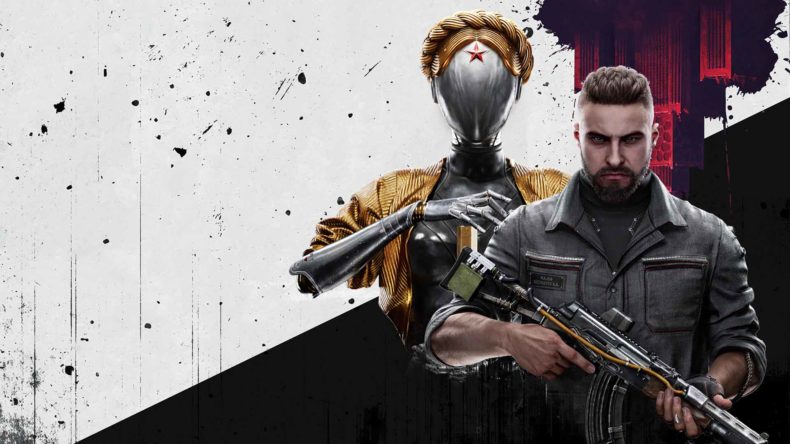February 21, 2023
The best way to describe Atomic Heart is to liken it to a thug in a pinstripe suit. It looks good on the outside, fits in with the upmarket crowd, will almost certainly turn a few heads, but beneath the well-dressed veneer, it’s an inelegant monstrosity that can’t keep its knuckles off the floor for long.
Developer Mundfish wears its inspirations on its sleeves here, and at least at surface level Atomic Heart is equal parts Bioshock: Infinite and Fallout 4. The opening hammers this home particularly strongly in a protracted cutscene where your American-accented Russian agent Sergey Nechayev, or P-3, enjoys a leisurely boat ride along the canals of Chelomey, a Columbia-esque city in the sky. It’s all so twee that you just know everyone you see will eventually end up skull-humped by the scores of robots walking among them. It’s hardly subtle, and the atmosphere is undeniably familiar.
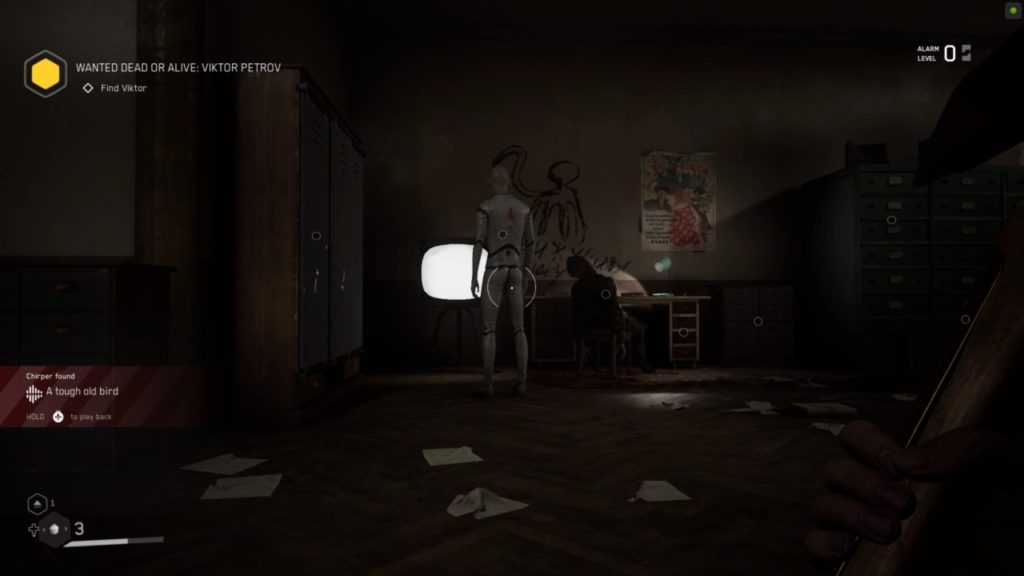
Chelomey is one of many floating cities designed by Russian visionary, Doctor Sechenov. In this reality, Russia won World War 2 when Sechenov developed the Polymer, a kind of all-purpose, might-as-well-be-magic technology used for pretty much any plot inconvenience you stumble across. Polymer leapfrogged humanity forward several decades in terms of technology, so Atomic Heart also has the 1950s retro-futurism made famous by Bioshock. Your character is a soldier whose life was saved by Sechenov, and who now wears a special Polymer glove, fitted with an advanced AI named Charles.
Why you’ve come to Chelomey and where you’re going isn’t immediately made clear. If Atomic Heart spent as much time telling its story as gazing lovingly into its own reflection the opening wouldn’t feel so uncomfortably drawn-out. In just the first half hour we have multiple tracking shots of the city, busy crowds that don’t feature again, various info-dumps, a little light pandering to China, and two interminable elevator rides, just so we can look at all the pretty. We also have P-3 being a dick to the glove for no given reason. You can set his voice actor to Russian if you want to, otherwise you’ll be listening to a cocky, standard-issue US generi-soldier just being generally rude and unpleasant for hours on end. He’s the kind of guy who asks how something works and then shouts “Boring!” half way through the explanation. This happens more than once.
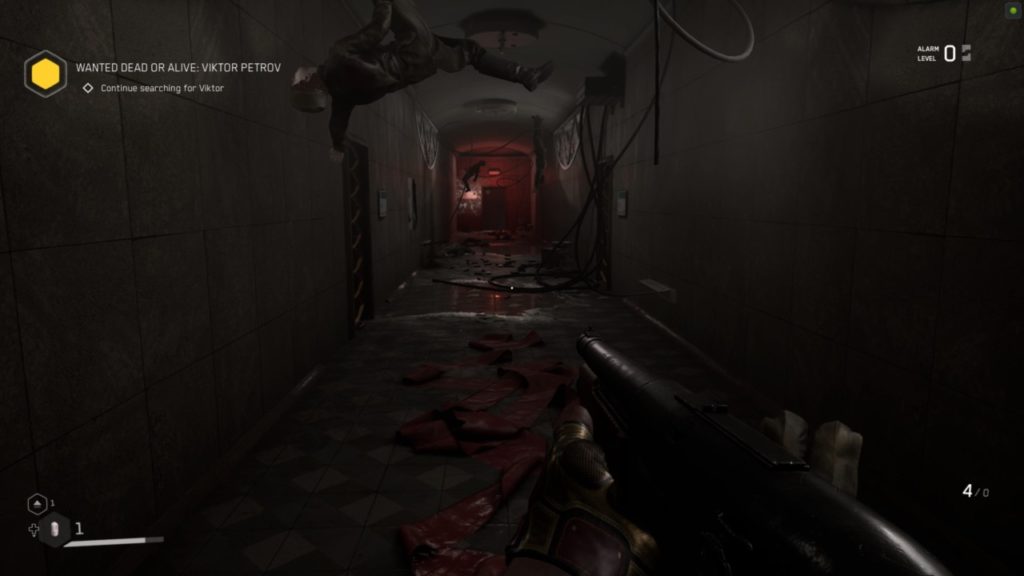
Before long though, things go inevitably tits-up, and P-3 ends up having to fight through an experimental facility overrun by killer robots and plant-headed zombies. The weird thing is, it takes an incredibly long time for Atomic Heart to get anywhere near the balls-out action game the trailers depict it as. For most of the early game you’ve only got a shotgun with limited ammo and an axe. You’re creeping through halls smeared with blood, past bodies wrapped up in electrical cables and high-tensile tentacles. The atmosphere is oppressive, unsettling even, and it hints at a more cerebral game than it turns out to be.
Enemies take a huge amount of punishment, and some of them can insta-kill you if you fail a quick-time event. Most are expressionless robots who quite simply run at you, punching, dropkicking, and grabbing at you. They will flash red when you need to dodge or you’ll get knocked on your ass, and without a lock on, it’s hard to even keep an eye on the spritely little fuckers. P-3 is no ballerina, and movement feels sluggish and unresponsive. It’s less of an issue later when you finally start to build an arsenal and unlock upgrades, but it takes a long time to get there.
The upgrades themselves are unlocked via a weird system. You’ll pick up a power known as SHOK via the story, which is installed in Charles and lets you stun robots, electrocute organics, and start or stop machinery. It’s used in a lot of environmental puzzles and comes in handy in combat. However, the other powers are simply unlocked by spending Polymer at NORA vending machines. There’s no penalty on what you buy as you can refund everything at no cost, so there are no real stakes involved. And because you don’t earn them, you simply won’t know what’s available. There’s a freeze spray, an ability that coats the enemy in Polymer you can then burn, freeze or shock. There’s a personal shield, and multiple upgrades that increase health, or add i-frames to your dodges. But it doesn’t feel organic or part of the story; it all feels like additional stuff. Which is mad, because without the upgrades Atomic Heart is simply too hard.
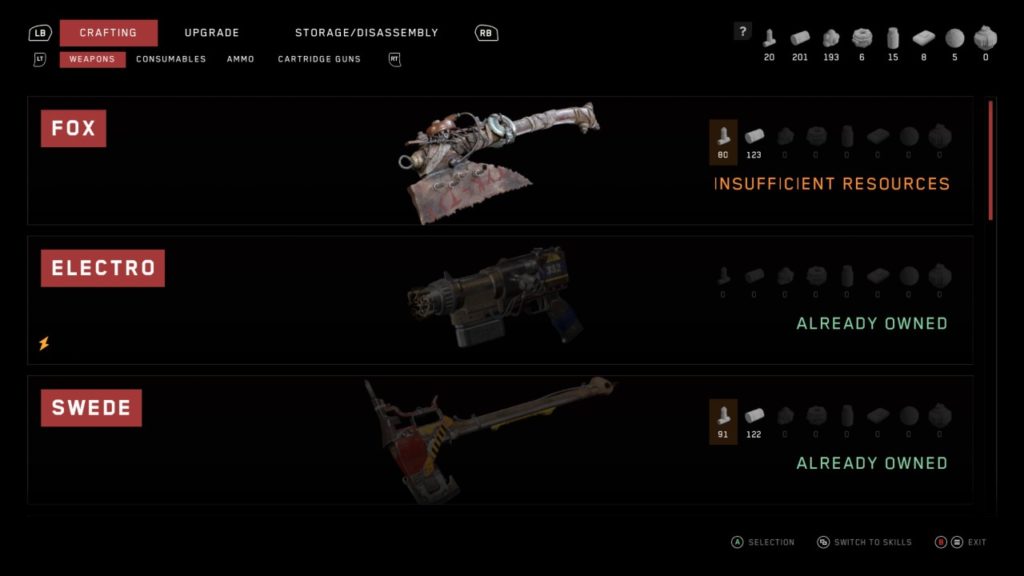
Weapons are similarly dolled out as long as you have the materials and blueprints. There’s an inventory system that lets you carry a certain amount of everything and hoard the rest in the vending machine but, well, the vending machine itself is slightly off-putting. It is, for want of a better term, as horny as fuck. The NORA AI has gone nuts – it’s the vending machine that has been killing everyone and wrapping them in tentacles. But not you. You, it likes. Really, really likes. At various points you’ll be invited to “stick whatever you like in me, sugar.” And that’s a tame example. It’s not necessarily the writing or voice acting that bothers me either – it’s knowing that someone, somewhere, is going to draw vending machine “fan art” and get off on it.
Atomic Heart is one of the strangest games I’ve played in some time. Sometimes you’ll need to swim through viscous Polymer to get to hard-to-reach areas, or converse with the malfunctioning neuro-polymer in dead bodies for their “advice”. At one point you can find someone who has been murdered by a chicken. Any time it feels like things have gone a bit quiet, more weird shit happens. And if you haven’t lost count of the number of different lockpick minigames by the halfway point, you’re operating on a higher level than I am.
Still, though, there’s a very good shooter in here, as well as a really atmospheric horror in places, and an intriguing RPG that combines elemental powers like Bioshock’s Plasmids. But it’s all kind of stuffed in without much real care, and then painted over with perhaps too much care. It looks stunning in places, utterly beautiful, but it’s almost entirely skin deep. Once you start really digging into it, the lack of elegance becomes more apparent.
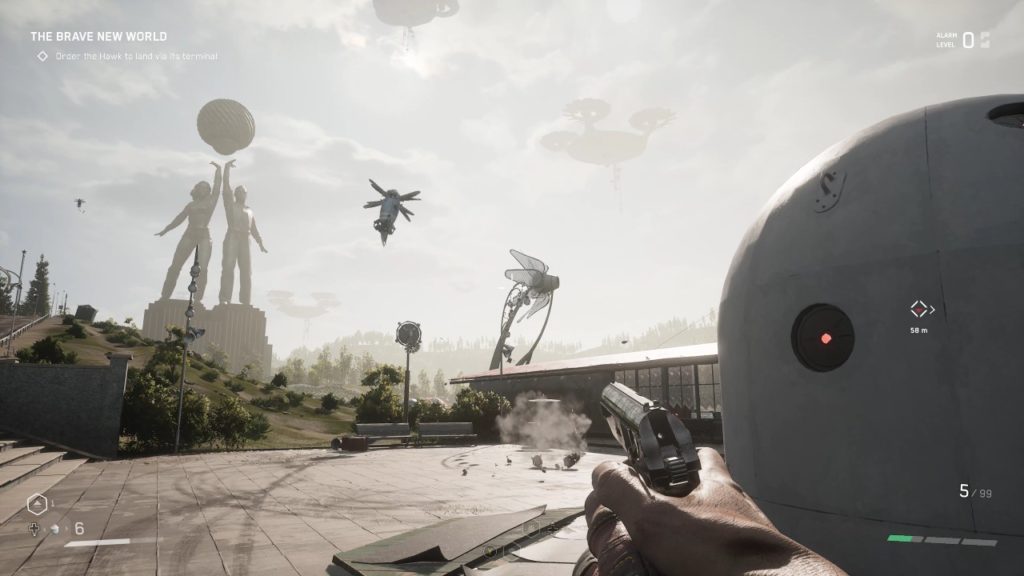
Holding RB, for example, hoovers out drawers, boxes, bins, and bodies, filling your inventory with materials, ammo, and health refills. But while it looks quite cool the first time, you end up ransacking entire rooms with no real idea what you picked up unless you read the list on the HUD as you do it. You can climb on yellow-daubed pipes and ledges, but can’t drop down without looking to where you want to go, even if that’s just the ledge beneath you. It also allows you to unlock things without explaining them, such as elemental cartridges for your weapons which I couldn’t work out for hours. By a certain point you’ll be so heavily armed and upgraded that you can make shrapnel out of anything that dares insult your hipster ponytail, but you have to wade through a lot to get there.
And yet, despite these shortcomings, there is some definite appeal to Atomic Heart. The story is intriguing, the environments are inspired but still interesting, and it looks amazing at times. Once you emerge from the first area you enter a semi-open world with optional “dungeons” called Test Facilities that hide tons of loot and upgrade blueprints. There are secrets to find and buildings to scavenge for supplies as you make your way to the next story section. You’ll drive vehicles, help NPCs, fight optional minibosses and learn more about the world from P-3’s conversations with Charles.
That being said, Atomic Hearts is not always an easy game to play through given the current global climate. This is a fictionalised version of an alternate history Russia that, by many accounts, suggests a Utopia as the game opens, and the timing couldn’t be more inappropriate. There will be those who can’t ignore the implications of such a storyline, even if all the characters do feel like Americans with Russian names, and such a stance is completely understandable.
But equally, the story may not have worked quite as well in any other setting. Never mind that P-3 uses modern-day millennial slang, or that there’s a disproportionate number of really potentially cool fights that are resolved in cutscenes, because there’s also a foul-mouthed OAP in a flying house who has a little pet cottage that walks on chicken legs (yes, she’s a Baba Yaga reference). Atomic Heart embraces lunacy, overblown sexuality, and good old fashioned violence at every turn. It’s no surprise that the result is a game that feels simultaneously polished and painfully unrefined.
Polymers are interesting
Good atmosphere
Looks great
Oddly paced
Platforming is awkward
Melee combat is too floaty
Poorly timed
Atomic Heart embraces lunacy, overblown sexuality, and violence at every turn, and feels simultaneously polished and yet painfully unrefined.


